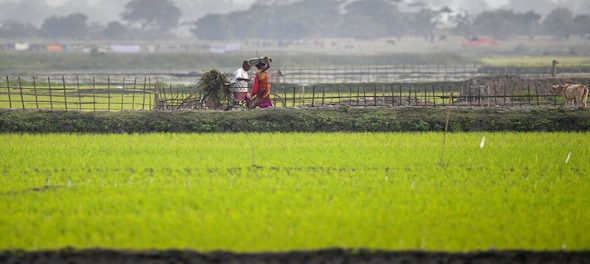
(This is the concluding part of the two-part series on the banking sector's liquidity quandary and the problems in the real economy. This piece examines how the government can help the economy emerge from the COVID shock. You can read the first part here: )
Let’s revisit some basic questions regarding our interest rates.
Despite ample banking liquidity, and with overnight rates so low, why are the Government of India (GOI) and state government bond yields still so high? What can we do to bring down these yields?
The State of Our Fiscal
Our fiscal deficit for the current fiscal year 2020-21 (FY21) will be far higher than budgeted. This is not up for debate – only the quantum of slippage is. The government’s receipts are going to plummet in these COVID-19 impacted times. Even after cutting back on some capital expenditures, we will also have to spend more than budgeted to stave off a humanitarian and economic crisis.
In FY19, the estimated total borrowing across central, state and public sector enterprises stood at 9.7 percent of GDP. Even with just a modest 2 percent of net extra spending this year, on the back of sharply lower receipts, that total borrowing figure could go up to 16 percent of GDP.
The Need to Monetize
If this degree of government deficit has to be funded by the market, our domestic interest rates will rise sharply. As it is, our household net financial savings is muted, and for now, there is little interest from foreign investors for our bonds.
This is already reflected in 10-year GOI and State Government bond yields at between 6.3 percent and 7.3 percent, against effective overnight rates of less than 3.75 percent.
High-interest rates will burden our already fragile financial services ecosystem. It will also hit businesses that are reeling under a debt burden, even as their topline disappears in this surreal COVID-19 economy.
There may be little option but for RBI to step in and fund part of the government fiscal slippage, to keep long term interest rates down for now. In other words, RBI has to “monetize” some of the fiscal slippage.
This is classical print and spend.
Paths to Monetization
There are various ways for RBI to monetize this deficit.
Let’s start with the obvious one — RBI lends money directly to GOI for it to spend. To the banking system, the net impact is an increase in deposits (money created out of thin air, so to speak) with a concomitant increase in banking liquidity surpluses.
The same net impact on the banking system would also be achieved if RBI were to transfer some of its capital to GOI, for GOI to then spend.
Or indeed if GOI were to first auction bonds to banks, the RBI was to follow up with a purchase of bonds through Open Market Operations (OMOs), and the government was to spend these funds.
In other words, print and spend can be achieved in any one of these three ways — direct RBI purchases of GOI bond issuances, RBI surplus transfers to GOI, and RBI OMO purchases. If any particular path was to give us extra comfort, we could choose that one. Mathematically, there is simply no difference between any of these routes.
What about LTROs? They represent monetization as well, except with a residual duration mismatch that remains with the banking system. As an example, GOI may issue 10-year bonds to banks, whereas via the LTRO, the RBI might effectively buy back a 3-year bond equivalent. The residual 3-year versus 10-year interest rate risk could take longer end interest rates very high and stress the ecosystem.
No Free Lunch
We will have to print and spend now because we do not have a choice. That doesn’t mean we can get away with it. Our economy will likely be seriously buffeted by the COVID-19 shock. The more we print and spend now, the more uphill our task will be when we finally emerge from COVID-19. That remains our brutal dilemma.
Unlike the US, we do not print a currency that everyone craves for. For the past five fiscal years, net FPI inflow across equity and debt has averaged less than USD 3 billion per year.
Once COVID-19 is behind us, we have to create ample jobs and increase our output, so that the demand eventually created by this printing can be met sustainably.
Summary
We may have little choice but to print and spend now. Deficit financing can be through either of RBI OMO purchases, primary purchases, or RBI surplus transfers to GOI. All of them have the same net impact on the banking system. LTROs are also a path to monetization but leave behind a duration mismatch.
There is no free lunch. When COVID-19 is behind us, we will need what we have always sought — job creation and output creation — to eventually pay for this print and spend.
First Published: Apr 18, 2020 1:23 PM IST
Check out our in-depth Market Coverage, Business News & get real-time Stock Market Updates on CNBC-TV18. Also, Watch our channels CNBC-TV18, CNBC Awaaz and CNBC Bajar Live on-the-go!


Prajwal Revanna Sexual Assault Case: Activist raises concerns over political interference, delayed investigation in the matter
Apr 30, 2024 10:17 PM
Lok Sabha Election 2024: Baramati election outcome will decide the future of Pawar dynasty, says expert
Apr 30, 2024 10:08 PM
Lok Sabha elections 2024: Baramati to Mainpuri, key battles in phase 3
Apr 30, 2024 7:01 PM

